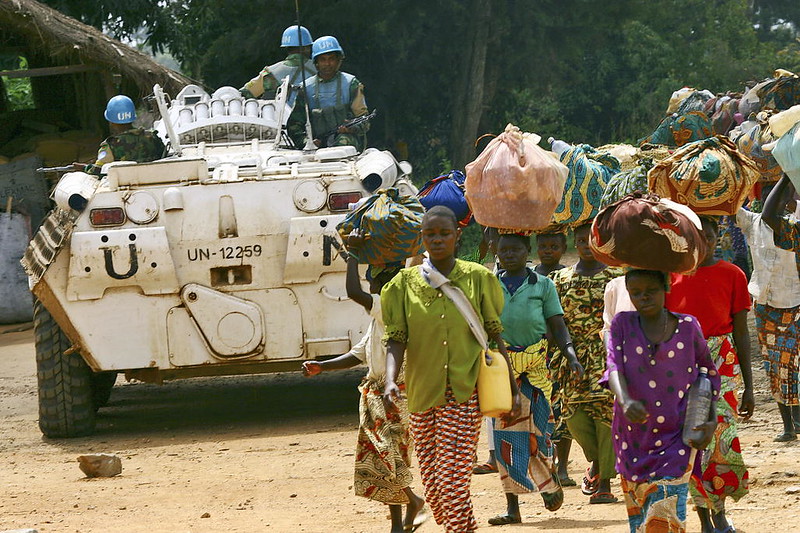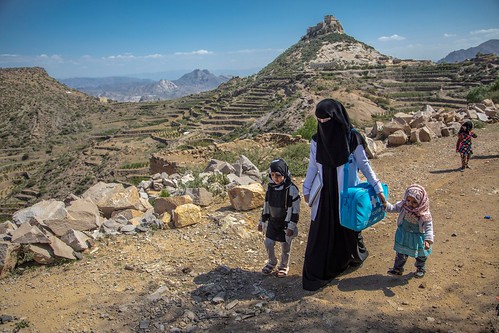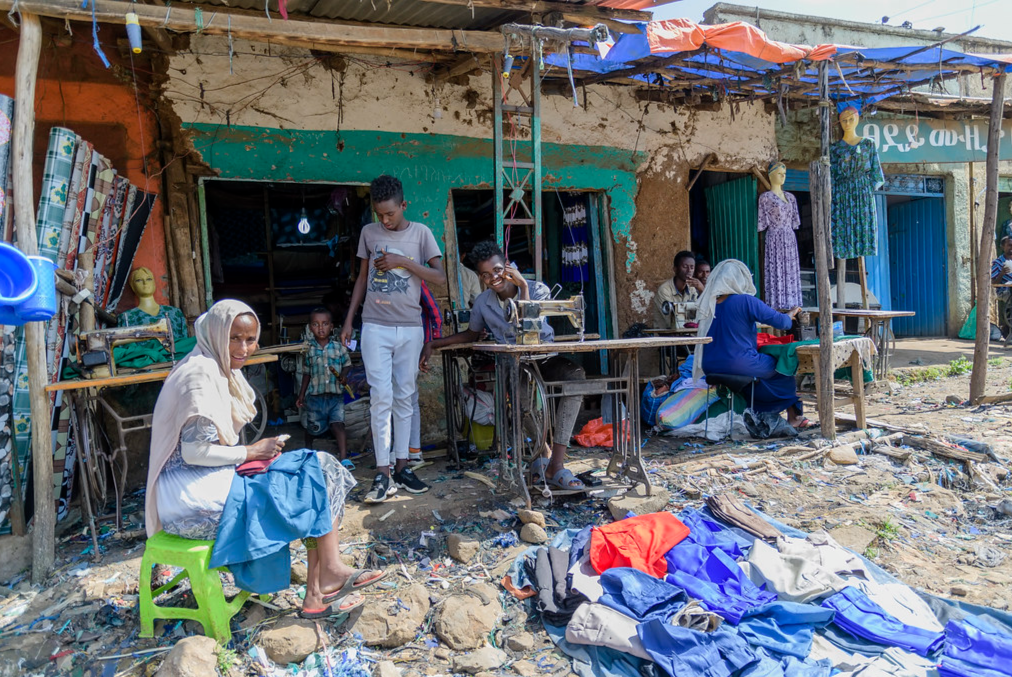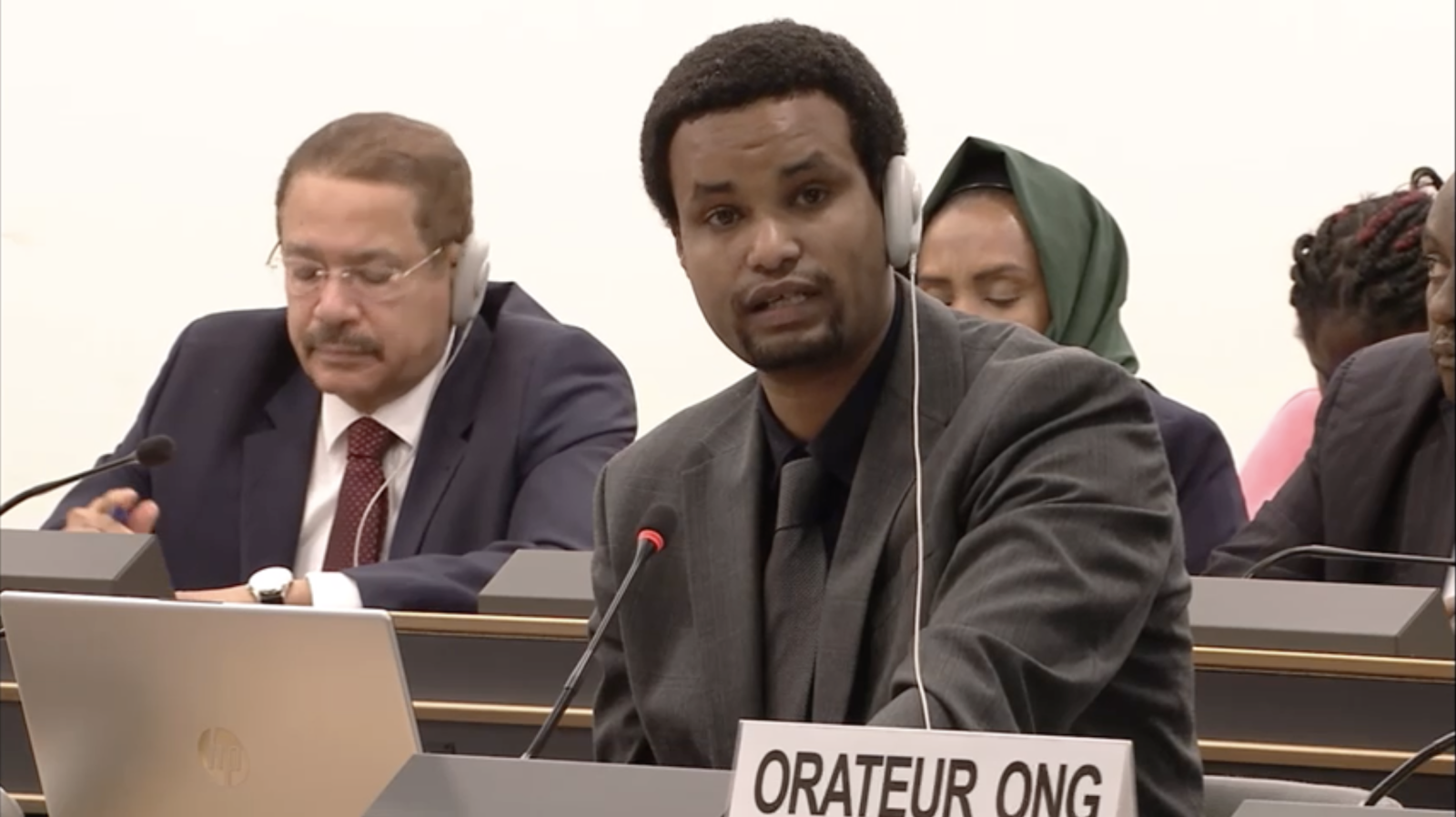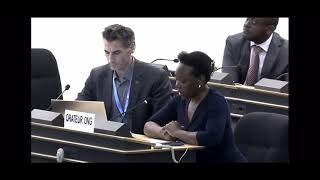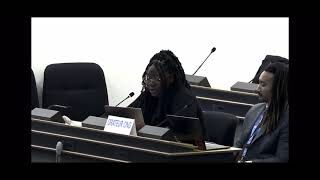The 48th Session of the Human Rights Council
13 September - 8 October 2021
Annual Discussion on the Integration of a Gender Perspective
Theme: The gender digital divide in times of the COVID-19 pandemic
27 September 2021
By: Louise Requin/ GICJ
Executive summary
The Panel discussion on the integration of a gender perspective took place during the 22nd meeting of the 48th session of the Human Rights Council. The prompt for the session was the gender digital divide in times of the Covid-19 pandemic. The discussion was led by panelists including the UN High Commissioner to Human Rights, Special Rapporteur on the right of everyone to the highest attainable state of mental and physical health Tlaleng Mofokeng, ITU official Jaroslaw Ponder, Vertias Zimbabwe official Lainah Ndiweni and disability consultant Tatiana Vasconcelos.
The discussion was dominated by concerns of intersectionality. The rights of POC women to non-discrimination regarding artificial intelligence, the specific vulnerabilities of disabled, older and rural women regarding technology. The discussion made mention of the different ways that the digital gender divide is perceived by women, including matters of access, skills but also concerning women’s safety online.
GICJ considers technology to offer an unprecedented opportunity for equality. Faster-than-ever circulation of information will allow women and girls all over the world to access knowledge and community-building. Remote job and teaching opportunities, training opportunities, as well as remote access to health care will allow information to reach women where the physical opportunities have failed to do so. Therefore, it is crucial that technology be a safe inclusive space, as opposed to recreating inequality and reproducing dangerous contexts for women.
Background
The Panel discussion was created after the adoption of the resolution 6/30 in 2007 on the integration of the human rights of women within the United Nations system. The resolution created the panel discussion as well as the evaluation of the progress made. The resolution takes an intersectional approach, considering other cross-cutting discriminations women face.
The full enjoyment of human rights by women and girls is hindered by a variety of patriarchal practices, stereotypes and beliefs. Incorporating a gender perspective in all the human rights mechanisms of the UN is the first step to achieving the full participation of women.
The goal of the panel discussions is to enhance understanding of all actors involved of the gender gap, and of successful practices. The Panel’s purpose is to address the root causes of sexism and misogyny which cause women’s human rights to be violated. It offers a platform to raise women’s participation, to bring their voices forward, and to gather information about successful practices. Participation from panelists and national agencies will allow relevant stakeholders to learn from shared experiences. Panelists open the discussion are followed by interventions from state representatives, NGOs and NHRIs.
The resolutions of the Council (41/11 and 47/23) address the potential of digital technologies to support women’s emancipation and empowerment. Resolutions 44/12, 38/7, 75/202 from the Council and the General Assembly recognize the gender digital divide which affects access to Information and Communications Technology (ICTs), but also exposes women to violence and harassment online. Resolutions have also addressed the depth of the gap in developing countries, specifically on the African continent. Council Resolution 38/5 recognizes the harassment and violence that women and girls face online, which are obstacles to the full enactment of their freedom of expression, of opinion, of association and of privacy. Therefore, the digital gender divide poses serious threats to the human rights of women and girls.
Concept note on the theme
The Covid-19 pandemic has caused most meaningful participation in work and educational opportunities to move online. The transition to the digital age is leaving an estimated 3.7 billion people unconnected due to lack of availability, infrastructure, financial means. Women and girls are mostly affected, and cross cutting discriminations worsen the digital opportunities along intersectional lines. Indigenous communities and rural communities are the most disconnected from the internet. Women with disabilities are prevented access to digitalized education and remote work. Older women are assumed to be inapt and are marginalized from programs of training for digital skills.
The overall obstacles preventing women and girls from accessing education and training is mirrored in the digital gender gap. Girls are less likely to acquire digital skills because of social beliefs and structural constraints. These obstacles have marginalized women and girls more sharply during the Covid-19 pandemic.
Issues of access to the internet, technologies, and of skills to navigate ICTs are not the only issues affecting women and girls in technology. The internet and social media also create a platform for the spreading of harmful stereotypes about women, maintaining them in a subordinate position. These beliefs merely mirror society’s patriarchal structure. Moreover, these platforms create an opportunity structure for sexual harassment and technology-facilitated gendered violence.
Panel Discussion on the Integration of a Gender Perspective
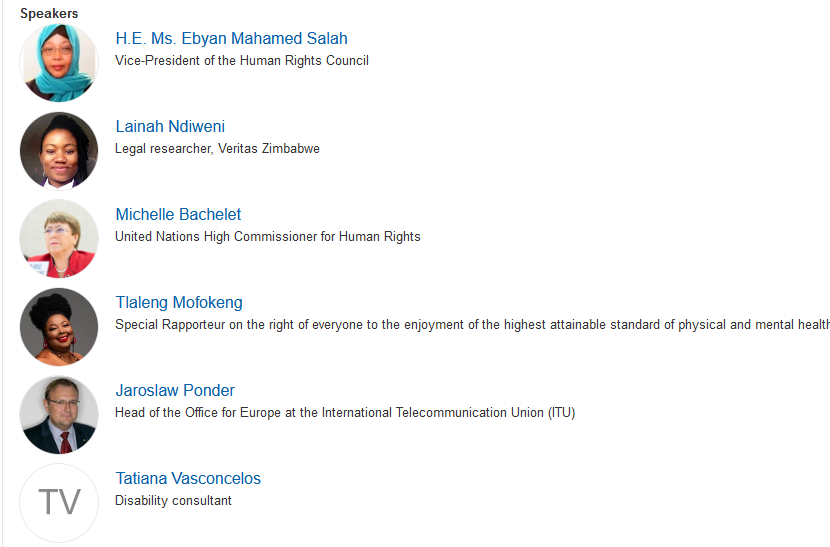 High Commissioner Michelle Bachelet opened the discussion with an explanation of how the Covid-19 pandemic exposed our contemporary reliance and dependence on technology. The digital gender gap is only a reflection of the patriarchy pervasively present in other areas of life. Covid-19 has meant that, for a majority, access to technology was the only lifeline to essential services, work and education. However, many women were left out of the switch to online work due to housework and caring duties to their children and home relatives. Similarly, girls were left out of online school due to the lack of equipment or digital skills necessary to access ICTs. Older women and rural women are critically left out of the digital age. Harmful stereotypes about women prevent them to access study of science, when 90% of future jobs are estimated to require ICT skills. Therefore, the goal to advance gender equality by 2026 must prioritize the erasure of the gender digital divide.
High Commissioner Michelle Bachelet opened the discussion with an explanation of how the Covid-19 pandemic exposed our contemporary reliance and dependence on technology. The digital gender gap is only a reflection of the patriarchy pervasively present in other areas of life. Covid-19 has meant that, for a majority, access to technology was the only lifeline to essential services, work and education. However, many women were left out of the switch to online work due to housework and caring duties to their children and home relatives. Similarly, girls were left out of online school due to the lack of equipment or digital skills necessary to access ICTs. Older women and rural women are critically left out of the digital age. Harmful stereotypes about women prevent them to access study of science, when 90% of future jobs are estimated to require ICT skills. Therefore, the goal to advance gender equality by 2026 must prioritize the erasure of the gender digital divide.
The Special Rapporteur on the right of everyone to the highest attainable state of mental and physical health Tlaleng Mofokeng said that ICTs have a critical potential to improve quality of life. A number of factors prevent the non-discriminatory realization of this potential. Mofokeng talked about how exclusive to the global North ICTs are, mirroring broad socio-economic inequalities. She emphasized the non-neutrality of artificial intelligence (AI), when biomedical AI has been proven to ignore fundamental sex and gender criteria, as well as racial criteria. It is important that these technologies are built to be inclusive of all genders and without racial discrimination. She mentioned the importance of making sexual and reproductive telemedicine available. Such an opportunity must include sexual minorities, gender non-conforming people, disabled women and girls, older women for an equal opportunity at an improved quality of life.
Both speakers emphasized the potential of ICTs to reproduce inequality and warned against the dangers of recreating the conditions of systematic exclusion online. Tatiana Vasconcelos, disability consultant, talked about the overlapping exclusion of women and disability from ICTs. She urged the audience to take necessary steps to build-in accessibility for disabled people in all tech initiatives. Recovery from the pandemic must therefore include an intersectional gender perspective and meaningful participation: “Nothing about us without us” she concluded.
Jaroslaw Ponder, head of the office for Europe at the International Telecommunication Union presented various programs for the involvement of women in ICTs as users and developers. He mentioned a study as well as conferences aimed at mapping and encouraging women’s participation in STEM. He emphasized the importance of collaborating with UN Women.
Finally, Lainah Ndiweni, a legal researcher for Veritas Zimbabwe talked about the specific vulnerability of women in developing countries. She presented her own work and emphasized the importance of making technology accessible to women and girls in their own vernacular languages and using the platforms and media that is suitable to them.
The discussion that followed involved many groups of countries as well as country ambassadors from national agencies. The Australian ambassador drew attention to the violence of online relations against women. She defined technology-facilitated violence and presented Australia’s national plan and dedicated government agencies which are committed to online abuse. She urged all to bear in mind the specific vulnerability of indigenous women online.
Various groups of Western countries mentioned the unsafe nature of the internet for women and girls. They asked the experts what programs could be enacted to ensure safety and equal participation of women in the digital economy. Greece made interesting points about how ICTs exacerbate existing discrimination and called for social media platforms to assume their responsibility and follow international legal guidelines to make the internet a safer space.
Arab states, Lesotho and Canada stressed the financial and infrastructural constraints limiting access to ICTs and specifically limiting girls’ access to digital literacy training. Vietnam emphasized the importance of allowing women’s digital participation for the future online reality that awaits us.
The FAO made a statement which emphasized the rights to information which women and girls fail to access due to lack of technical skills and opportunity. The UNFPA on the other hand made the argument that the digital age enables violence and specifical gender-based violence. The violence of online harassment was also underlined by the NGO European LGBT, who argued that LGBT people are overexposed to online bullying and violence. However, the discussion also pointed to the wonderful opportunities of community building the internet can offer to isolate LGBT individuals, and how enable access to these platforms ensures their empowerment.
Panelists concluded that a universal commitment to equal rights requires to ensure equal online participation. Mofokeng argued that online spaces are not a bonus, but a necessary platform of participation that women need to have access to. Ponder called on his counterparts in the tech world to create affirmative opportunities for women to change sustainably and systematically. Ndiweni concluded on the incredible opportunity vested in technology for women’s emancipation.
Position of Geneva International Centre for Justice
GICJ believes that technology and the internet are incredible opportunities for advancing women’s rights. We already live in a world dominated by technology, and we have failed to include women in this world already. We can only expect that new technologies and the internet will take on an even bigger role in the upcoming years. Access to healthcare, education, work, business, finance and investment will become entirely dependent on the mastery of digital tools by individuals.
We must make sure today that we give women and girls the appropriate training to make them full participants in the world of tomorrow. Technology offers a massive opportunity to create new rules, new platforms for learning, improved access to information, faster communication and many other chances to improve women’s access to equal treatment.
Moreover, the internet provides a chance at reaching more women than ever. This is an opportunity to enhance education on gendered stereotypes to deconstruct them. Government agencies should start crafting platforms dedicated to gender and sexual education, which tailor to all, men and women alike, with the goal of raising awareness on harmful stereotypes. Such platforms could be used to education on sexuality as well, to create comprehensive access to information about contraception. This way, technology can be used as a way to empower women, to give them tools to navigate their sexuality even in places where it is a taboo, to connect them to wider networks of women sharing their own experiences and much more.
Access to technologies is specifically crucial for those women who stand in the intersection between gender and race, indigeneity, disability, sexual orientation. Queer individuals use the internet as a way to combat isolation, to connect with peers and share experience. They may feel alienated by their local surroundings, and the internet helps combat this alienation by connecting them to a community. Similarly, the internet can be a forum for experience sharing for those experiencing racism, acting like a virtual safe space. These spaces can also act as catalyzers for gathering information and successful practices, to spark progress.
For women with disabilities, new technologies present an opportunity for inclusion where physical infrastructures have largely failed. Therefore, it is crucial that all stakeholders take the necessary steps for making online spaces and softwares friendly to people with disabilities. This means including people with disability in software development, and specifically women with disabilities who may make different use of technology.
Finally, and perhaps most importantly, all relevant stakeholders must act to end the perpetuation of sexual and gender based violence online. The digitization of gender-based violence is a continuation of patriarchal dynamics of oppression. Social media platforms must do all in their power to end the violence caused towards women.
Justice, Human rights, Geneva, geneva4justice, GICJ, Geneva International Centre For Justice
Previous Reports from the 48th Session of the UN Human Rights Council





